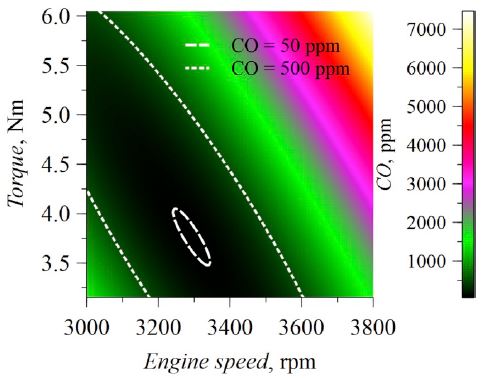This work presents the development of CO, O2, CO2, NO, NO2 and NOx emission maps for a diesel engine powered by diesel and diesel-biodiesel fuel blends. Experiments were carried out in a single-cylinder, four-stroke, air-cooled compression ignition engine covering nine experimental conditions corresponding to high, medium, and low torque and engine speed levels.
ABSTRACT: Diesel engines applications cover a broad spectrum, ranging from vehicles that transport passengers and move goods to specialized vehicles and equipment used in the construction and agriculture industries. However, diesel engines are a significant source of pollutant emissions that contribute to poor air quality, negative human health impacts, and climate change. This experimental case study develops emission maps based on statistical models for a single-cylinder, fourstroke, air-cooled diesel engine as a function of torque and engine speed. The tested fuels were 100% diesel (B0), and blends with 5% (B5) and 10% (B10) biodiesel originating from African oil palm (Elaeis guineensis). The study explores the individual contributions of NO and NO2 to NOx and discusses the correlation between CO and O2 emission maps. The statistical models of CO, CO2, and O2 feature R2 adjusted values greater than 0.8, while the models of NO and NO2 show R2.
You can access the full version of the research product below: : Case Studies in Thermal Engineering 19 (2020) 100613. The original article is published in the journal Case Studies in Thermal Engineering Vol. 19 (2020): Science Direct.

